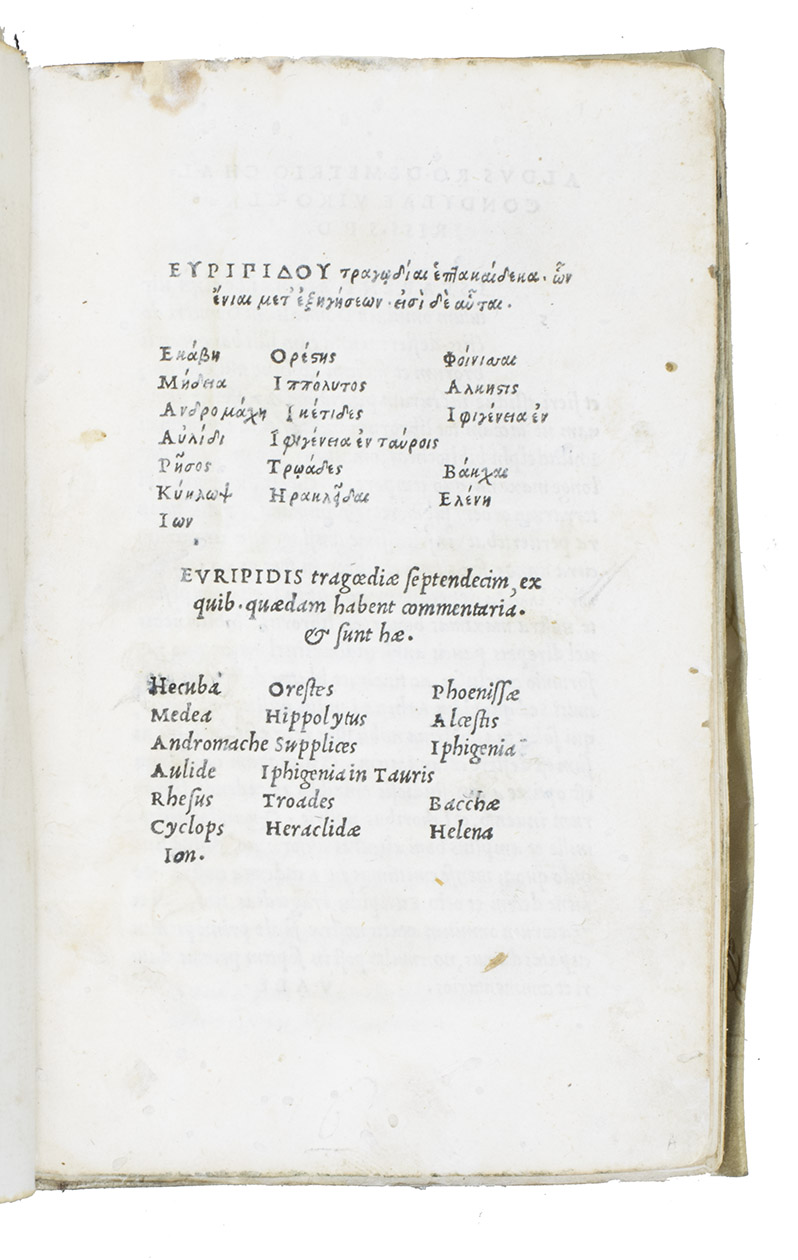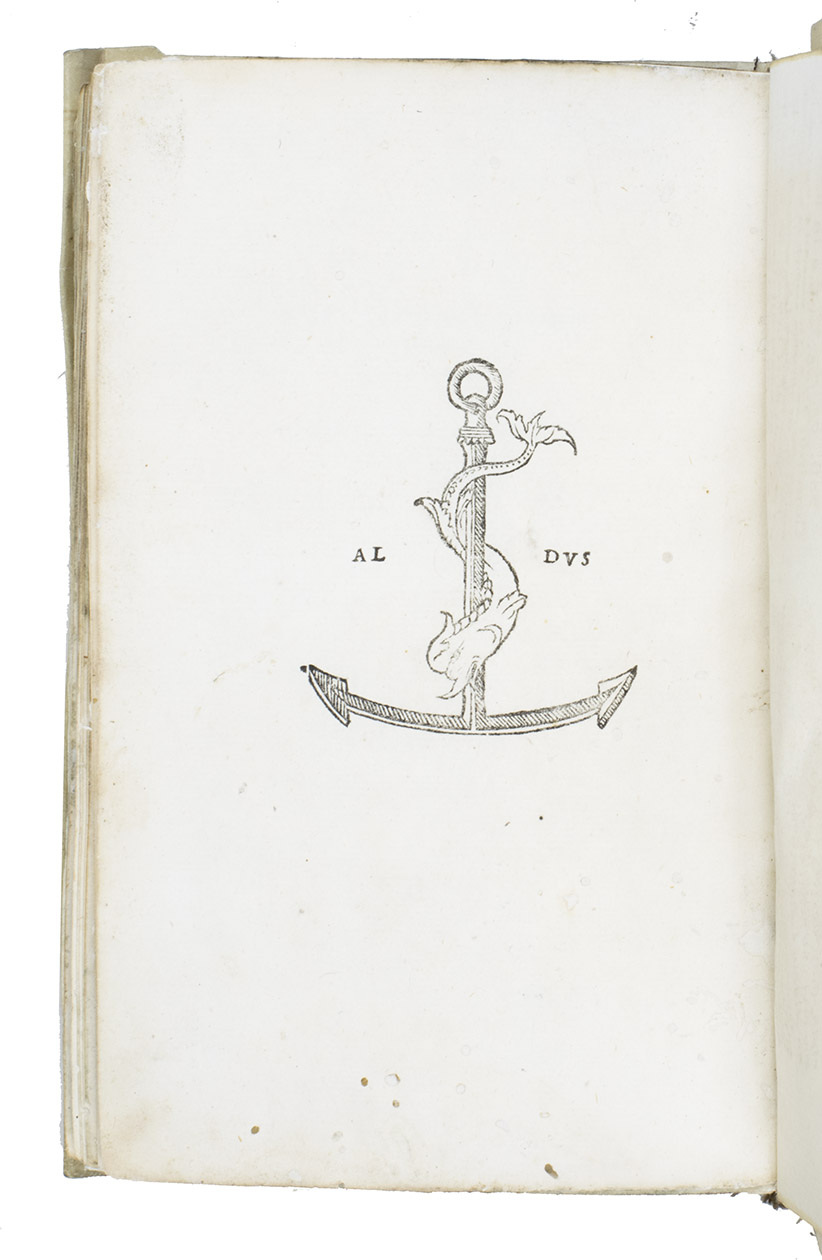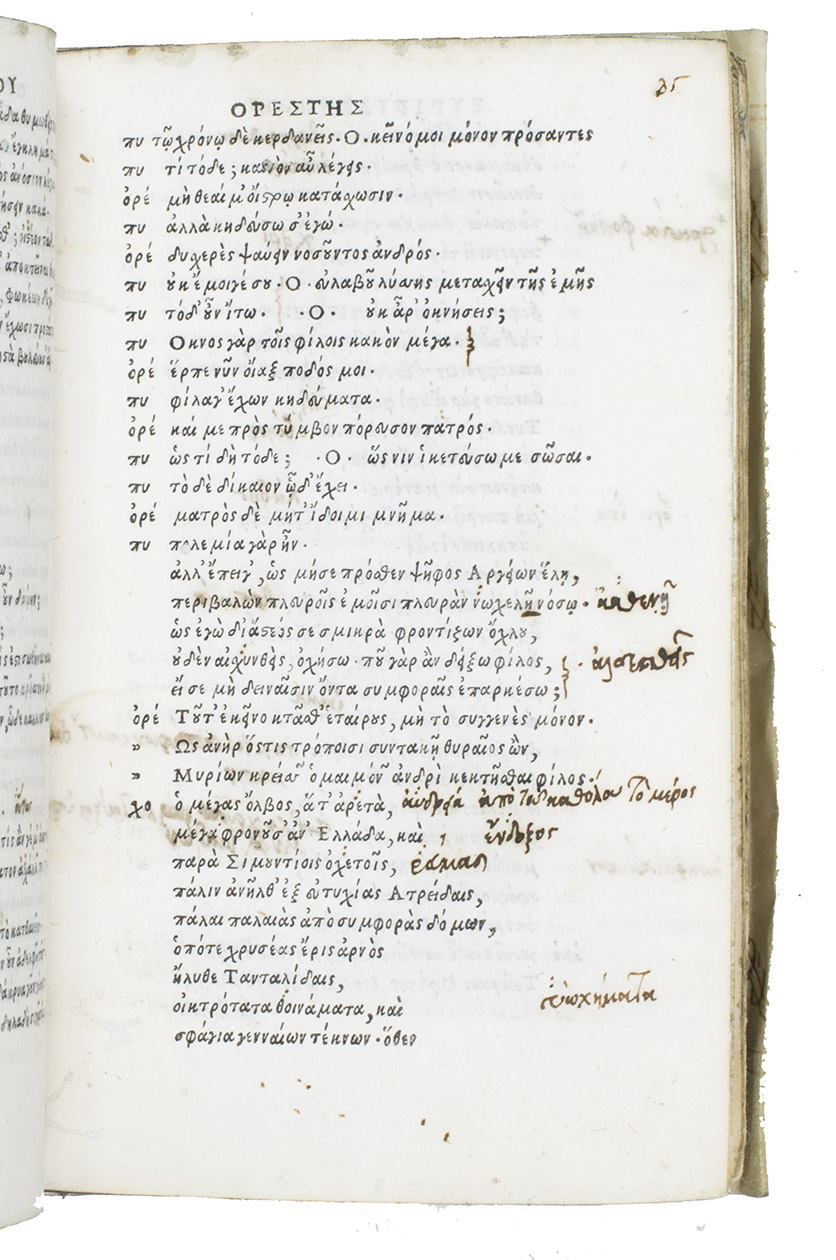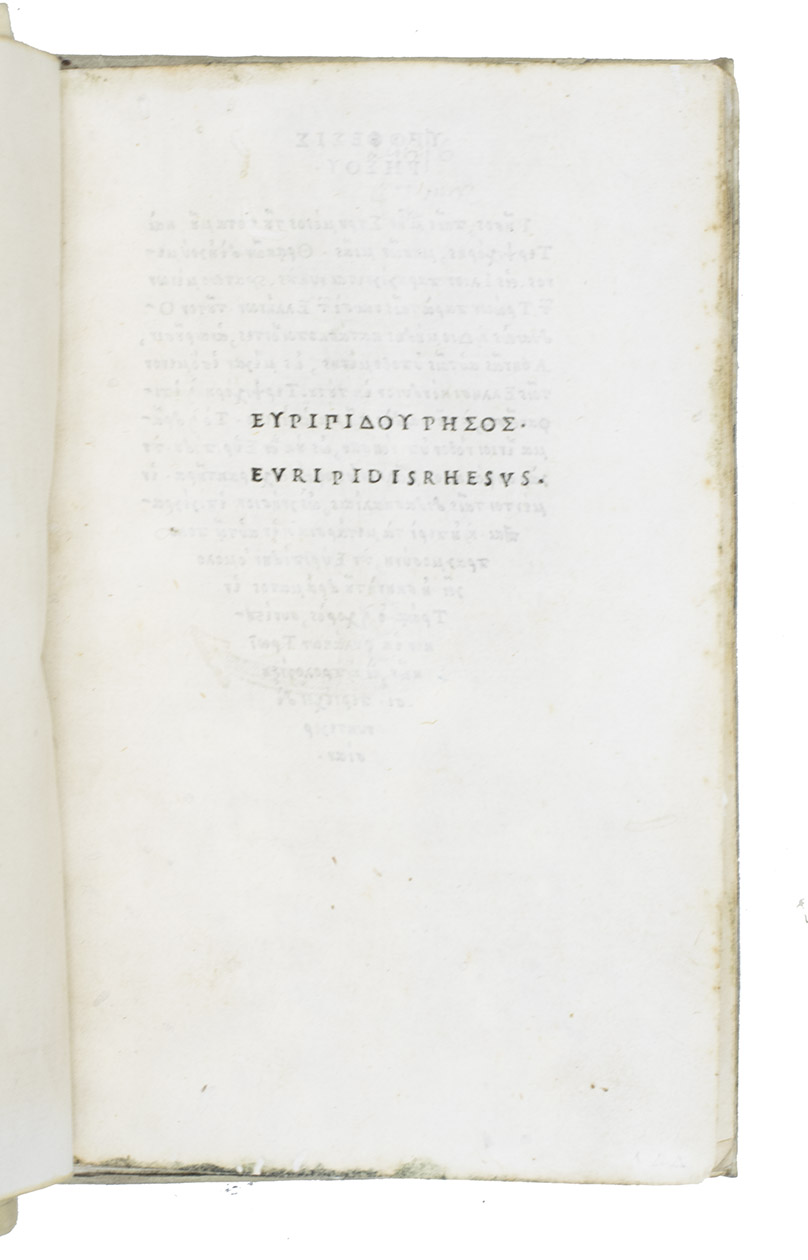EURIPIDES.
[Title in Greek then Latin:] Tragoediae septendecim [recté octodecim], ex quib[us]. quaedam habent commentaria. & sunt hae. Hecuba[,] Orestes[,] Phoenissae[,] Medea[,] Hippolytus[,] Alcestis[,] Andromache[,] Supplices[,] Iphigenia in Aulide[,] Iphigenia in Tauris[,] Rhesus[,] Troades[,] Bacchae[,] Cyclops[,] Heraclide[,] Helena[,] Ion[, Hercules furens].
(Colophon to each volume: Venice, Aldus Manutius, February 1503). 2 volumes. 8vo. With Aldus's anchor device on the last page of each volume, printed in Aldus's beautiful Greek type.Matching limp vellum (made from 2 leaves from a ca. 1560/70? Spanish legal manuscript), constructed or reconstructed ca. 1900. [268]; [190] ll.
€ 40,000
"Exceptionally important" (Lowry) first edition, in the original Greek, of most of the surviving plays of Euripides. It contains 18 plays, fourteen printed here for the first time and four for the second (and in a much more accurate text). This first edition of nearly all his surviving plays (Electra remained unprinted until 1545) certainly assured the survival of the greater part of Greek historical drama. Only 4 of his plays had been printed previously, by J. Lascaris in Florence, 1495, also in Greek. In Thomas More's 1516 Utopia, his hero Raphael gives a collection of Greeks books to the Utopians: Plato, Aristotle, Theophrastus, Plutarch, Homer, Aristophanes, Sophocles and Euripides, all in Aldine editions (Lowry, p. 262). Aldus's first Greek types, in 1495, set the style for the future by following a sloped cursive hand rather than the rounder upright hand that dominated the incunabula period. The present book is set in the smallest and best of his Greek types, first used in his Sophocles 6 months earlier (Scholderer, Greek printing types, no. 25). It is better cut than the earlier ones and has fewer ligatures, making it clear and legible even to a modern eye. It set the style until Garamont's Grec du Roi brought extensively ligatured Greek types back into fashion for about two centuries. Aldus introduced the world's first italic type in 1501 and uses it here for the few bits of Latin text.
With contemporary manuscript notes, mostly in Greek with a few in Latin, in the first half of volume 1. Bifolia 2N3.6 and 2N4.5 were interchanged by the binder, disturbing the sequence of the pages. In good condition and with large margins (leaf size 16 x 10 cm), with small and mostly marginal worm holes, affecting an occasional letter on the title-page and a few text pages, and a few leaves with minor, mostly marginal water stains. The first edition of most of Euripides's plays and a beautiful early example of Aldus's best Greek type. Ahmanson-Murphy 55/1 & 55/2; Lowry, The world of Aldus Manutius, pp. 142, 145, 151, 262; Renouard, p. 43, no. 10.
Related Subjects:






